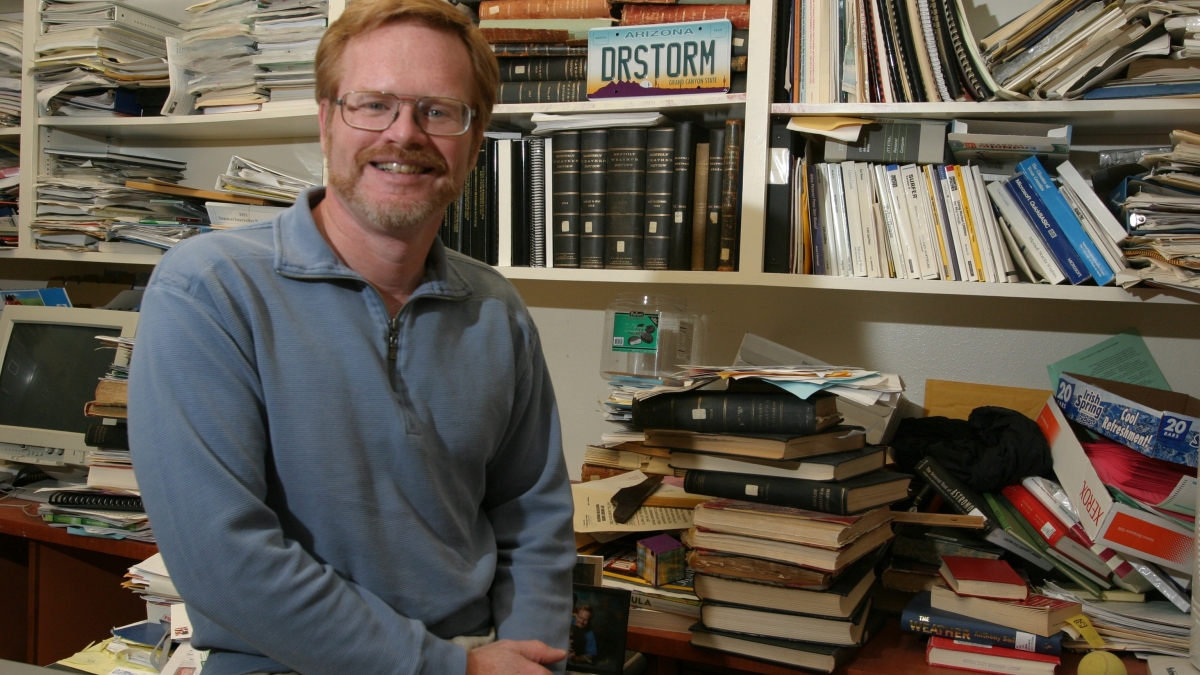World Meteorological Organization verifies highest temperatures for Antarctic region

Randy Cerveny, Arizona State University professor of geographical science and urban planning and the Rapporteur of Climate and Weather Extremes for the WMO
The World Meteorological Organization announced Wednesday new verified, record high temperatures in Antarctica, an area once described as “the last place on Earth.” The temperatures range from the high 60s (in Fahrenheit) to the high teens, depending on the location they were recorded in Antarctica.
Knowledge and verification of such extremes are important in the study of weather patterns, naturally occurring climate variability and human-induced change at global and regional scales, said Randy Cerveny, an Arizona State University professor of geographical science and urban planning and the Rapporteur of Climate and Weather Extremes for the WMO.
“The temperatures we announced today are the absolute limit to what we have measured in Antarctica,” Cerveny said. “Comparing them to other places around the world and seeing how other places have changed in relation to Antarctica gives us a much better understanding of how climate interacts, and how changes in one part of the world can impact other places.”
Because Antarctica is so vast (it is roughly the size of the United States) and varied the WMO committee of experts, convened by Cerveny, provided three temperature measurements for the Antarctic.
The highest temperature for the “Antarctic region” (defined by the WMO and the United Nations as all land and ice south of 60-deg S) of 19.8 C (67.6 F), which was observed on Jan. 30, 1982, at Signy Research Station, Borge Bay on Signy Island.
The highest temperature for the Antarctic Continent, defined as the main continental landmass and adjoining islands, is the temperature extreme of 17.5 C (63.5 F) recorded on Mar. 24, 2015 at the Argentine Research Base Esperanza located near the northern tip of the Antarctic Peninsula.
The highest temperature for the Antarctic Plateau (at or above 2,500 meters, or 8,200 feet) was -7 C (19.4 F) made on Dec. 28, 1980, at an automatic weather station site D-80 located inland of the Adelie Coast.
The Antarctic is cold, windy and dry. The average annual temperature ranges from -10 C on its coasts to -60 C (14 F to -76 F) at the highest points in the interior. Its immense ice sheet is about 4.8 km (3 miles) thick and contains 90 percent of the world’s fresh water, enough to raise sea levels by around 60 meters (200 feet) if it were all to melt.
Cerveny said that observing the extremes of what the Polar Regions are experiencing can provide a better picture of the planet’s interlinked weather system.
“The polar regions of our planet have been termed the ‘canary’ in our global environment,” Cerveny said. “Because of their sensitivity to climate changes, sometimes the first influences of changes in our global environment can be seen in the north and south polar regions. Knowledge of the weather extremes in these locations therefore becomes particularly important to the entire world. The more we know of this critically important area to our environment, the more we can understand how all of our global environments are interlinked.”
Cerveny said an additional benefit is understanding how those extremes were achieved.
“In the case of the Antarctic extremes, two of them were the result of what are called ‘foehn’ winds — what we call Chinook winds — very warm downslope winds that can very rapidly heat up a place. These winds are found even here in the United States, particularly along the front range of the Rockies. The more we learn about how they vary around the world, the better we can understand them even here in the United States.
Full details of the Antarctic high temperatures and their assessment are given in the on-line issue of Eos Earth and Space Science News of the American Geophysical Union, published on March 1, 2017.
More Science and technology

Hack like you 'meme' it
What do pepperoni pizza, cat memes and an online dojo have in common?It turns out, these are all essential elements of a great…

ASU professor breeds new tomato variety, the 'Desert Dew'
In an era defined by climate volatility and resource scarcity, researchers are developing crops that can survive — and thrive —…

Science meets play: ASU researcher makes developmental science hands-on for families
On a Friday morning at the Edna Vihel Arts Center in Tempe, toddlers dip paint brushes into bright colors, decorating paper…

